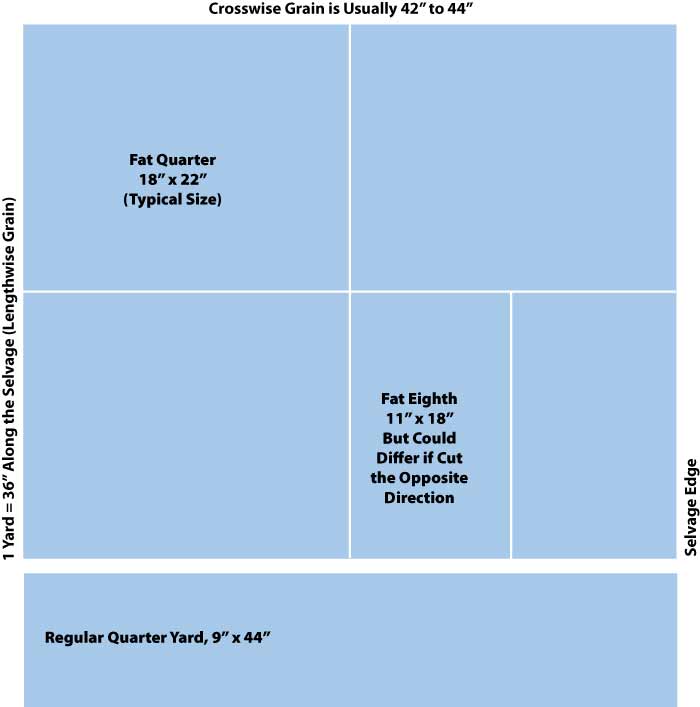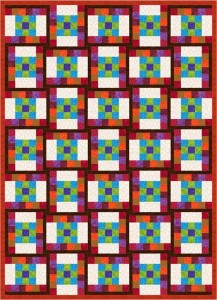Fat quarters of fabric are special cuts that give quilters the same amount of fabric found in a regular quarter-yard cut, but in a form that’s often a lot more usable. The cuts are so popular that nearly all quilt shops offer lots of pre-cut fat quarters of fabric.
Fat Quarters vs. Regular Quarter Yards of Fabric
- Fat quarters are created by cutting one yard of fabric into four large rectangles that usually measure 18″ x 22″ each.
- A typical quarter yard of fabric usually measures 9″ x 42″ although the length may differ depending on the fabric.
- Typical quarter yard cuts can become twisted and distorted during prewashing. Try washing them gently by hand to avoid problems.
Benefits of Fat Quarters of Fabric
- A large rectangle makes it possible to cut larger shapes from a quarter yard of fabric, including the pieces needed for both patchwork and applique quilts.
- Some quilters like to trim their fat quarters into rectangles of exactly the same size and frame them with narrow strips of fabric to make a quick quilt.
- Buying a variety of fat quarters is a wonderful way to accumulate a stash of fabric for scrap quilts.
- Fat quarters offer more length along the fabric’s sturdy lengthwise grain. Both lengthwise and crosswise grains are stable, but lengthwise cuts are less stretchy.
Remember that fat quarter size can vary a bit and be prepared for a little shrinkage and fraying if you prewash the fabric in a washing machine.
What Are Fat Eighths of Fabric
Fat eighths of fabric are cut by dividing fat quarters in half but the dimensions vary depending on which direction the cut is made. Quilters sometimes exchange fat eighths with each other but they aren’t as commonly sold in quilt shops.
There are hundreds of ways to use fat quarters in your quilts. Try assembling a quilt similar to the example below, replacing the nine patch and instead just using large rectangles cut from the same size of a variety of fat quarters. Sew frames of any width to only the long sides of each rectangle and then flip-flop adjacent blocks from row to row to create the up and down motion.






